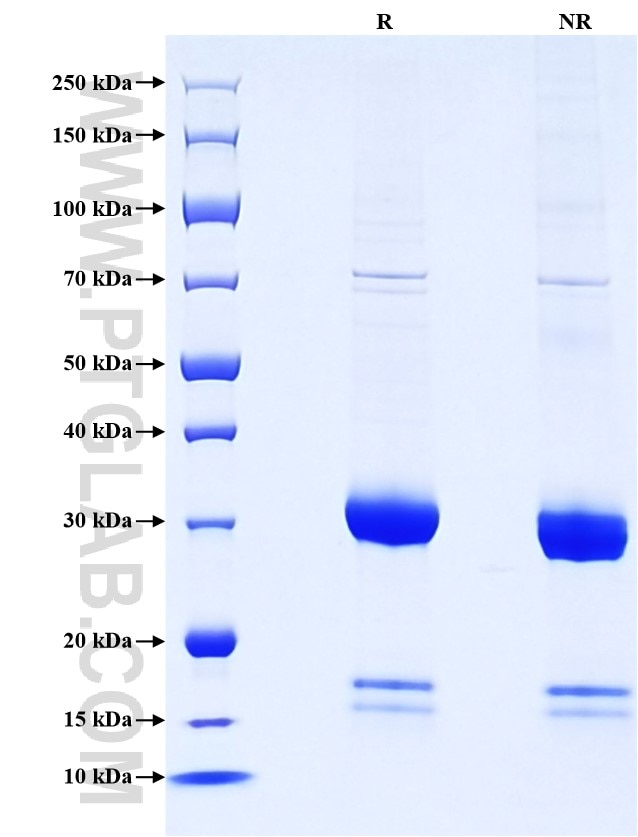Recombinant Mouse IGFBP2 protein (His Tag)
Species
Mouse
Purity
>90 %, SDS-PAGE
Tag
His Tag
Activity
not tested
Cat no : Eg1196
Validation Data Gallery
Product Information
| Purity | >90 %, SDS-PAGE |
| Endotoxin | <0.1 EU/μg protein, LAL method |
| Activity |
Not tested |
| Expression | HEK293-derived Mouse IGFBP2 protein Glu35-Gln305 (Accession# P47877) with a His tag at the C-terminus. |
| GeneID | 16008 |
| Accession | P47877 |
| PredictedSize | 30.6 kDa |
| SDS-PAGE | 28-33 kDa, reducing (R) conditions |
| Formulation | Lyophilized from 0.22 μm filtered solution in PBS, pH 7.4. Normally 5% trehalose and 5% mannitol are added as protectants before lyophilization. |
| Reconstitution | Briefly centrifuge the tube before opening. Reconstitute at 0.1-0.5 mg/mL in sterile water. |
| Storage Conditions |
It is recommended that the protein be aliquoted for optimal storage. Avoid repeated freeze-thaw cycles.
|
| Shipping | The product is shipped at ambient temperature. Upon receipt, store it immediately at the recommended temperature. |
Background
IGFBP2 is one of six homologous proteins in the IGFBP family. Based on its ability to bind IGFs with high affinity, IGFBP2 can exert its functions by interacting with IGFs in the circulation to control the function and activity of IGFs, and prevent the interaction between IGFs and IGF receptors.IGFBP2 was found to be highly expressed in many cancers, including glioma, lung cancer, colorectal cancer, ovarian cancer (OC), rhabdomyosarcoma, gastric cancer, breast cancer, bladder cancer, prostate cancer, endometrial cancer, penile squamous cell carcinoma, and hepatocellular carcinoma.
References:
1. Perez-Larraya JG. et al. (2014). Cancer.120(24):3972-3980. 2.Yuan Q.et al. (2019). Biosci Rep. 39(6):387-395. 3. Han S.et al. (2014). PLoS One. 9(4):e93791. 4. Lin Y.et al. (2009). Neuro Oncol. 11(5):468-476 5.Guo C.et al. (2013). PLoS One. 8(9):202-206.

